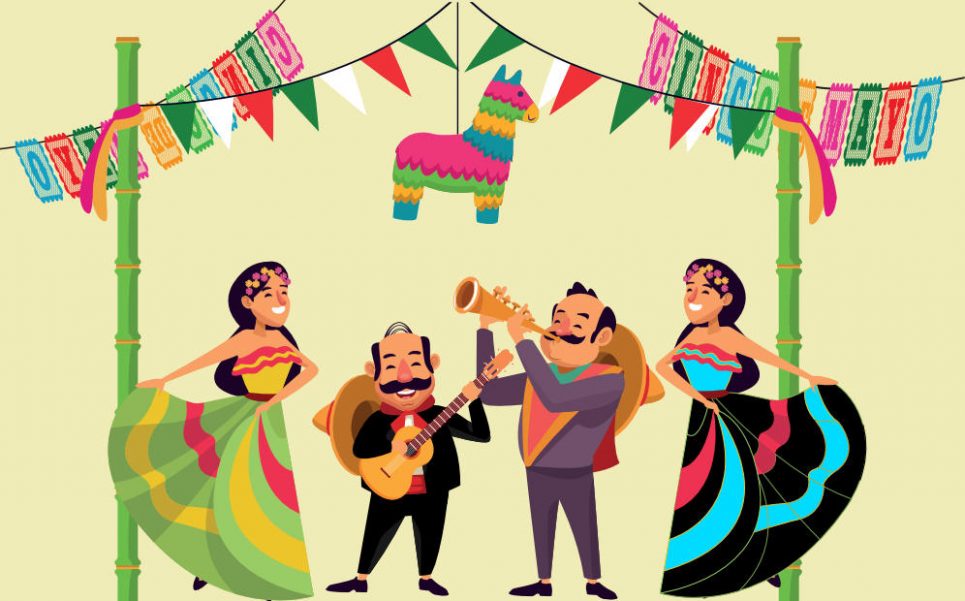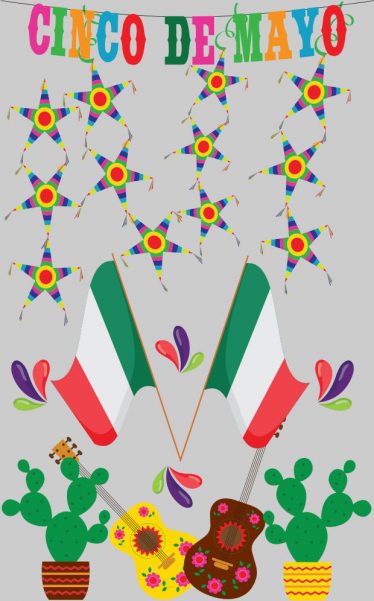I begin this text recognizing, from a current perspective, its complexity, it is costing me months of work to write about May 5th, the question constantly arises, from what approach is relevant to address this issue today, it is a historical date, it is a celebration, it serves as a pretext for the construction of identity, it is of a nation, a region, or not. All the hypotheses or perspectives are or can become assertive, or not; let’s go little by little, breaking down the ideas, and let’s see where they lead us.

May 5th as a historical date
In the old Mexico, a North American country, in 1862, when Benito Juarez was president, he decided to stop paying the debt he had with Spain, the United Kingdom, and France, in response the then famous Napoleon III, nephew of Napoleon Bonaparte, responded with a military intervention.
The army led by Charles Ferdinand Latrille (Count of Lorencez), showing his expansion interests, arrived at the port of Veracruz and with the intention of reaching the capital, Mexico City, had to face an army under the command of the Texan Ignacio Zaragoza in the intermediate city of Puebla. It was on May 5th, where a small national army defeated the great foreign army. Making them withdraw from the country.
Mr. President, I am very happy with the behavior of my generals and soldiers. They have all behaved well. -The French have been taught a very severe lesson; but as a tribute to the truth, I will say that they have fought like brave men, a great part of them dying in the trenches of the Guadalupe trenches. May it be for the best, Mr. President. I wish that our beloved country, so unfortunate today, may be happy and respected by all nations.
I. Zaragoza
A victory was achieved, with courage and dedication, in spite of having everything against them: numerical and material inferiority, diminished morale, and little sympathy from some sectors of elites and politicians. At this time Mexico was still divided between republicans (liberals) and conservatives.
There was a death penalty for Mexicans who wanted to join the foreign armies and amnesty for conservatives or enemies of the republic who joined to defend the country from intervention. It was then that the conservative Miguel Negrete Novoa said: “I have a country before party”, putting himself at Zaragoza’s disposal in the battles.
By June 10, 1863, the war was officially lost, when the French arrived at the capital in their next intervention, President Juarez went to the north of the country, and the second Mexican Empire was pronounced with Maximilian I as a guest to reign in the new government.
May 5th as a celebration
By the year 1867, some historical sources tell that a group of Mexicans celebrated that victory in the city of Texas (which was where Ignacio Zaragoza was born in 1829, 16 years before Texas was annexed as part of the United States). Since then, it can be said, this popular celebration of a group, became a national celebration and more so among those who live in the states that once in history belonged to Mexican territory (California, Nevada, Utah, New Mexico and Texas).

A relevant fact from my perspective is that by 1930, the Mexican consulate in the city of Los Angeles in California, United States, decided to organize a celebration of May 5th, which gave it an official and diplomatic character, since years later at the White House in Washington DC, a dinner was held where migrants and Mexicans were invited, celebrated and commemorated. It is also called “Latino Heritage Day”, in which immigration from Mexico is celebrated.
It is in the city of Los Angeles where the 5th of May is one of the biggest celebrations, with concerts, popular festivities, and parades. As well as the presentation of folkloric dances, mariachis, and charros.
There are no shortage of sombreros, zarapes, and piñatas (all the world-famous stereotypes of what is called Mexican culture, and at the same time elements so alive in the traditional folkloric work of this region. I do not want to leave aside the aesthetics that have been built from this festivity, its characteristic colors, and the worldwide impact that this country has had on popular culture).
May 5th as a construction of identity
It has been common, as humanity, to make use of some historical fact or character to generate identity, those features of a person or a community that characterize them in front of others and unites them among them.
This is how we can speak of meaning, of the meaning of a historical fact as a community metaphor, in this case of hope and unity.
A small group managed to defeat the great enemy, a symbol for Mexicans and migrants who lived oppression by invaders or foreign governments, and by an act, the Battle of Puebla, their worth was shown.
Zaragoza is that Mexican American representative or hero of the migrants, one of them, as many of them, a symbol of resistance, have come to name him.

The objective historical fact is slipping through our fingers and identities are splitting. Mexicans outside Mexico know this celebration, others do not, Mexicans in Mexico celebrate this day, others do not. Mexico has 32 states and one of them, Puebla, is where this day is commemorated with a parade and a popular festival, the other states do not. This is how some Mexicans know about 5 de Mayo and others do not. Some celebrate it and others do not.
May 5th in the Latino, Mexican, or Hispanic immigrant community in the USA
As I mentioned above, it was not easy for me to address this topic and I decided to go straight to the sources, in this case, the Mexicans living in the United States, and thanks to social networks I was able to gather information about it, one more perspective, in fact, a very interesting one from Ivette Aguilar, a poblana who lives in the United States.
She shares her experience with words and images:
I would like you to write my version of 5 de mayo as a poblana: The celebration is incredible! There is a parade of public schools and they make beautiful floats and while they parade, the bands play and the girls choreograph. It is a school contest where the best float, the best band, the best song played, the best choreography, the best uniforms, the best uniforms, the parade is so admirable and so beautiful! It is an honor to participate in the parade. During the years I lived in Puebla I always went to see it. For me, it is the most beautiful parade in the world.
When the parade ends there is a street party, you can eat antojitos poblanos and later you go for a walk around the fair. For me as a poblana it is a great celebration in the city.
Now I live in the USA, and very proud, I do celebrate!
The parade is organized by the government and the schools. It has been a tradition for years. My dad was the one who “got me into the habit” of going to the parade.
Only public schools in Mexico participate and lately schools from other parts of the country, such as Panama, the United States and Guatemala, also participate. Each school must present the girls with the choreography and the band, optional is the float. For as long as I can remember, at least one year the current president has been present and the governor has always presided.
The parade is televised, although I only know that the Puebla channel shows it (3 years ago I had Directv in the USA and one channel showed the parade). Personally, I think that the wording of the parade on TV makes it very boring because they want to make it very symbolic related to what happened in those times.

I think that parade has a lot of potentials. And why not, if many countries celebrate the 5th of May, make it really a Mexican celebration and make it something that all Mexicans celebrate? Maybe not for the historical side, but for the pride of being Mexican and that nowadays in the world it is a day related to Mexico.
Thanks to Ivette and her perspective, I now propose that instead of talking about the origins, let’s talk about the reasons, what motivates us to celebrate, to write today, to comment with our acquaintances on the subject, to correct those who say that we celebrate independence, what possibilities this date offers us, what motivates us to recognize it as a special day.
May 5th is not Mexico’s independence
It is in the United States (primarily) where 5 de Mayo is celebrated “American style” with Tex-Mex food such as chimichangas, burritos, chili, nachos, and margaritas.
Restaurants offer special menus and in the stores, you can find canned or packaged Mexican-type products as well as many others to decorate colorfully “a la 5 de Mayo”.
This celebration already has its cultural characteristics, it is complex since the word traditionally takes on nuances outside of what one might think is usual, and at the same time, it is not, since it is a celebration that has followed the customs of the people who celebrate it since 1930.
It is a date of encounter, it is a pretext to dance, to sing, to consume, to eat, it is a day of cultural recognition, a day where popular festivals and concerts are held, some parades, like many other dates in the calendar, May 5th is a moment in which we can celebrate, feel part of a culture, live together and say cheers!


